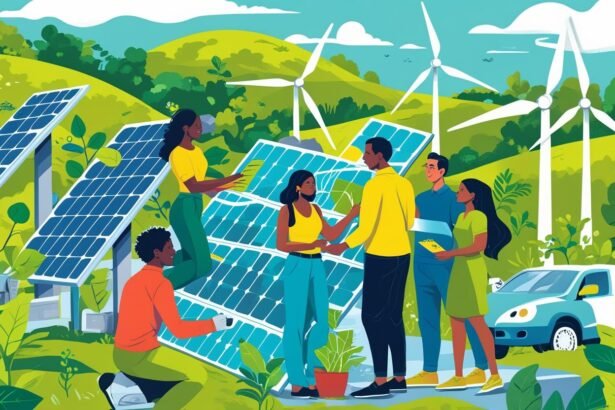Minimalistic solo travel: packaging light, living big is more than a trend. It's a lifestyle choice that gives you freedom, peace, and a deeper connection with your journey. Many solo travelers find carrying less makes them feel more alive. Whether you are heading to a quiet village or a fast-moving city, the weight you carry affects your experience. Traveling light opens doors, shortens wait times, and adds meaning to each step. It allows you to move quickly, explore deeply, and enjoy life without distraction. Minimalism brings clarity to travel, making each destination more personal.
The Power of Traveling with Less
Less is more when it comes to solo travel. A lighter bag means fewer choices and fewer worries. You gain flexibility when you don’t have to drag heavy luggage through narrow streets or up long staircases. Carrying less also helps you focus on what matters. You won’t spend hours looking for a shirt buried at the bottom of your suitcase. Instead, you'll have a few items that work well and look good. You’ll find joy in simplicity. That joy shows in the way you walk, eat, and meet people. You’re not weighed down by things that don’t serve you.
Choosing the Right Travel Bag
Your travel bag is your closest companion. The right one should match your body and your journey. Look for a backpack or small carry-on that fits airline cabin rules. Around 40 to 45 liters is enough space. A smaller bag keeps you from overpacking. It also helps you move quickly through airports and train stations. If you plan to walk a lot, a well-fitted backpack works better. If you're staying in urban hotels, a wheeled carry-on is fine. The key is choosing something light, strong, and easy to carry. Test it before your trip to make sure it feels good.
Pack for Purpose, Not for Fear
Many travelers overpack because they fear not having enough. But most places have shops if you need something. Don’t pack for unlikely situations. Focus on what you’ll actually wear and use. One of the best habits in minimalistic solo travel is thoughtful packing. This begins with planning your wardrobe. Stick to neutral colors that mix well. Pick clothes that work in different situations. A dark shirt works during the day and at dinner. One jacket is usually enough. One pair of jeans, two tops, and a sweater can handle most climates. This kind of smart packing gives you more freedom.
Clothing That Does More
Each item should serve more than one purpose. Your sweater can also be your plane blanket. A scarf can work as a beach wrap or head cover in temples. Lightweight clothes are easier to wash and dry quickly. Choose clothes made of breathable, quick-dry materials. These are easier to manage on the road. Limit shoes to two pairs. One should be comfortable walking. The other can be casual but neat for dinners or outings. Every piece should earn its place. If you hesitate about packing something, leave it behind.
Toiletries in Compact Form
Toiletries often take up too much space. Swap liquids for solids when you can. Solid shampoo, conditioner, and soap reduce weight and mess. Pack small, refillable containers for lotions or creams. Most hostels and hotels offer basic items if needed. Use a small pouch to hold your essentials. Keep it easy to access during airport checks. Try to limit your kit to only what you use daily. A toothbrush, small toothpaste, deodorant, sunscreen, and razor usually cover most needs. Compact and simple kits are easier to manage.
Managing Your Technology
Tech can add weight and distraction. Only bring what you need. A smartphone, charger, and small power bank are usually enough. Laptops can be useful for digital nomads, but only pack one if work requires it. Avoid bringing extra cables or devices. Download offline maps and translation apps before your trip. Save copies of your ID, tickets, and addresses in your phone and cloud. Use a small, secure pouch for chargers, adapters, and cords. Keep your tech light and organized. It should support your travel, not dominate it.
Travel Documents and Money Safety
Solo travel demands strong personal responsibility. Keep all travel documents in one place. Use a waterproof pouch to hold your passport, tickets, insurance, and copies of bookings. Make digital backups of each item. Email copies to yourself or use cloud storage. For money, carry a card and some local cash. Split them into two places. This protects you if one gets lost. Use a slim wallet for daily use and hide a backup stash in your luggage. Always have a plan if your card fails. Avoid carrying large sums of cash.
How to Plan for Smart Solo Travel
When you travel alone, every choice is yours. That’s a powerful thing. Start by planning your route. Book your first few nights in advance. Choose places that are central and safe. Read reviews from other solo travelers. Look for clean, well-located spaces near transport. This saves time and energy. Use maps to plan walking distances. Limit your moves to two or three cities on one trip. This gives you time to explore deeply, not just pass through. You’ll remember experiences more clearly when you’re not rushed.
Local Transport and Moving Around
Understand the transport options before you land. Download apps for buses, trains, or local rideshares. Carry a transport card if the city offers one. Learn a few words in the local language. Knowing how to ask for directions is powerful. Solo travelers benefit from walking. It’s free, flexible, and connects you to real life in a city. Avoid overbooking tours. Leave space for surprise events and street discoveries. Walk with purpose and pay attention to surroundings. Move like a local when possible. Blend in to feel more present and safe.
Budgeting for Freedom
Minimalistic solo travel saves money. It limits how much you carry and how much you spend. You avoid baggage fees and don’t buy unnecessary things. Use the money you save for experiences. Cook when you can. Book accommodations with shared kitchens. Buy fresh food from local markets. Eating in helps your budget and gives insight into local culture. When you eat out, choose where locals eat. Street food often tastes better than tourist spots. Learn basic prices to avoid scams. Spend on memories, not stuff.
Choosing Free and Rich Experiences
You don’t need to spend much to enjoy travel. Many cities offer free museums, events, or walking tours. Parks, beaches, and markets give you insight without cost. Ask at your hostel or guesthouse about free activities. Join city walks or language exchanges. Watch public shows or festivals. Visit places of worship respectfully. Some of the richest moments come from the simplest experiences. A sunset, a chat with a stranger, or a slow morning at a café may stay with you for years. Minimalism makes you notice these small joys more deeply.
Staying Safe and Connected
Safety is always a concern for solo travelers. Start by trusting your instincts. If something feels off, walk away. Always know your hotel address and how to return. Avoid empty streets late at night. Use apps to share your live location with someone you trust. Check in regularly with friends or family. Choose accommodations with good security and reviews. Carry a copy of your passport and a list of emergency contacts. Learn how to contact police or medical services locally. Being prepared helps you feel calm and confident.
Meeting People Without Carrying Baggage
Traveling alone doesn’t mean being alone. You meet more people when you’re solo. Stay in hostels or guesthouses with shared spaces. Talk to fellow travelers over breakfast or in common areas. Join group tours or workshops. Language exchange meetups can be great for conversations. Locals often appreciate travelers who respect their culture and try to connect. Keep your gear light so you’re always ready for an invite. Being free from baggage helps you say yes to new friends and new plans. Moments shared with strangers often become your favorite memories.
Embracing the Unknown
Solo travel teaches you to trust yourself. You solve problems on your own. You learn from your mistakes and grow stronger. Unexpected things will happen. Buses may run late. Plans may change. Use these moments to practice patience and creativity. Traveling light makes it easier to adapt. If a room is full, you can walk to the next place. If you’re offered an opportunity, you can accept it without packing chaos. Let the unknown become part of your adventure. It makes you feel alive in ways comfort never can.
Keeping a Journal of the Journey
Travel goes by quickly. Writing helps you hold on to the moments. Use a small notebook or your phone. Record where you went, who you met, and how you felt. Reflect on small joys—a street musician, a hidden café, or a quiet morning alone. This practice keeps your memory sharp. It also gives you something to read later and relive the experience. Solo travel is not just about places. It’s about who you become along the way.
Conclusion
Minimalistic solo travel: packaging light, living big is about more than saving space. It’s a way of choosing experience over things. It invites you to travel smarter, freer, and with more heart. Carrying less lets you live more. You become open to people, places, and moments. The world reveals itself more clearly when you’re not buried in stuff. With each journey, you grow in trust, confidence, and joy. So pack light. Live big. And let solo








